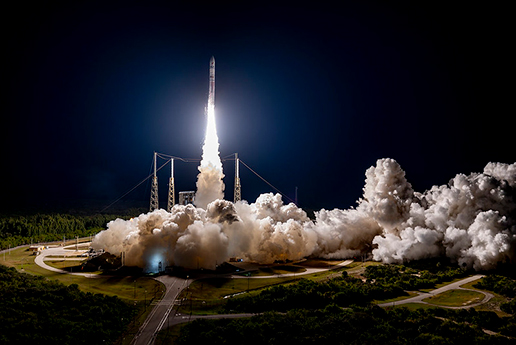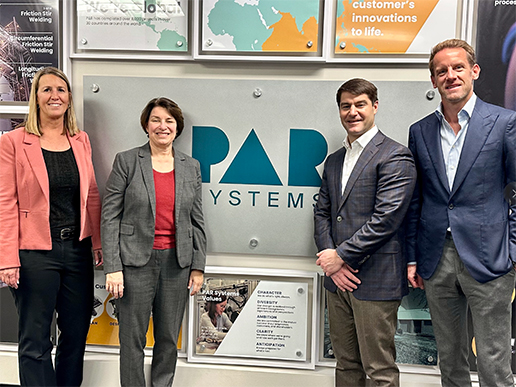How Consumers, Data and AI are Shaping New Food Automation Frontier
February 11, 2021
Written by Darragh Staunton, President and COO | PAR Systems
With data and AI, the food system has a huge opportunity to evolve to solve food insecurity.
Agriculture is one of the most advanced industries when it comes to automation. Labor shortfalls and the need to get the absolute most out of a shrinking amount of use-able soil and land have led agriculture to embrace automation faster than nearly any industry. The labor and land issues mean that non-automated parts of our supply chain have largely plateaued. Meanwhile, global economic demands are complicated to forecast and shifting, and consumers are only asking more from their food – where it comes from, its impact and how it’s been made. The next frontier is downstream where other industries have been focusing: handling, packing, sorting, and processing.
While the primary growth in automation in this sector had been focused on planting and harvesting tasks, as these are highly repetitive and generally straight-forward nature of what we ask of the machines, robotics in agriculture, for example, is projected to grow globally to $20 billion by 2025. Today, like nearly every other industry, most of the food system is only scratching the surface of what’s possible through modern automation and opportunities are surfacing across all facets of business.
Consumer Searching for Transparency
“Transparency throughout the supply chain will dominate in 2021, with consumers searching for brands that can build trust, provide authentic and credible products and create shopper confidence in the current and post-COVID climate,” said Lu Ann Williams, director of insights and innovation at Innova. Along with trust, the rise of more granular, personalized diets will accelerate as consumers look for food and beverage options that represent their unique lifestyles and values. Combined with the increasing convergence of food and retail, personalization and transparency are going to ask more from traditional automation processes that have been built for a limited number of SKUs or crops and out of tune with more modern, responsive supply chains.
This shift will require flexibility and adaptability to understand shape, feel, color, and operationalize material handling, packing and sorting to increase speed, safety, and efficiency and meet these new demands.
Making Data Actionable
Today, there’s more data than ever coming out of our farms – from equipment to soil. As this data has expanded on the farm, we’re starting to see a shift in focus from field to facility. Everything from the density of seeds, chemicals, or nutrients can all be utilized to enable automation processes to learn, adapt and become additive far beyond yield amounts and pricing. According to the International Federation of Robotics, Rosborg Food Holding, Denmark’s largest producer of herbs and miniature plants, uses a collaborative robot equipped with a two-fingered gripper with data-driven, advanced technology, that mimics the human sense of touch when gripping and moving objects along its packaging line.
Imagine a grain processor that could use the data from its silos to streamline bagging and palletizing. It could use data to understand and adapt to the type of grain and where and how it needed to be bagged and palletized. Right now, that would require manual intervention to switch lines, but we’re seeing technological leaps that make this very much a reality.
AI and Machine Learning
As illustrated by the Rosborg example above, one of the factors pushing automation this way is the recent accessibility and scale of AI and machine learning technologies that are turning data into intelligence, allowing systems to adapt to things like crop volume, SKUs, and materials in a way we never thought possible when businesses designed traditional automated systems. These technologies are what will make our data actionable and enable it to impact bottom lines. According to research company MarketsandMarkets, the AI in agriculture market was valued at $600 million in 2018 and is expected to reach $2.6 billion by 2025.
When we employ these learning technologies, we can define how a machine should proceed or recover in the packing or palletizing process, for example, and decrease the negative feedback loop that slows time to market, the need to manually reconfigure, and wastes resources. While some of today’s current systems employ AI and machine learning already, the industry has few solutions that are bringing this to life at the scale of today’s agriculture market. Especially outside the crop productivity space, the food business has yet to adapt to the ways these technologies could change business.
The Time is Now
COVID-19 has underscored how our supply chains and food systems need to evolve. Consumers will continue to ask more from a food system that was not built for today’s diet complexities and the growing number of consumers. With the world population expecting to surpass 8.5 billion by 2030 and 9.7 billion by 2050, The World Economic Forum projects that we will need 70 percent more food than is consumed today. Together with data and AI, the food system has a huge opportunity to evolve to meet this critical need. But, we can’t wait; the time is now to invest in modern automation across our businesses.




